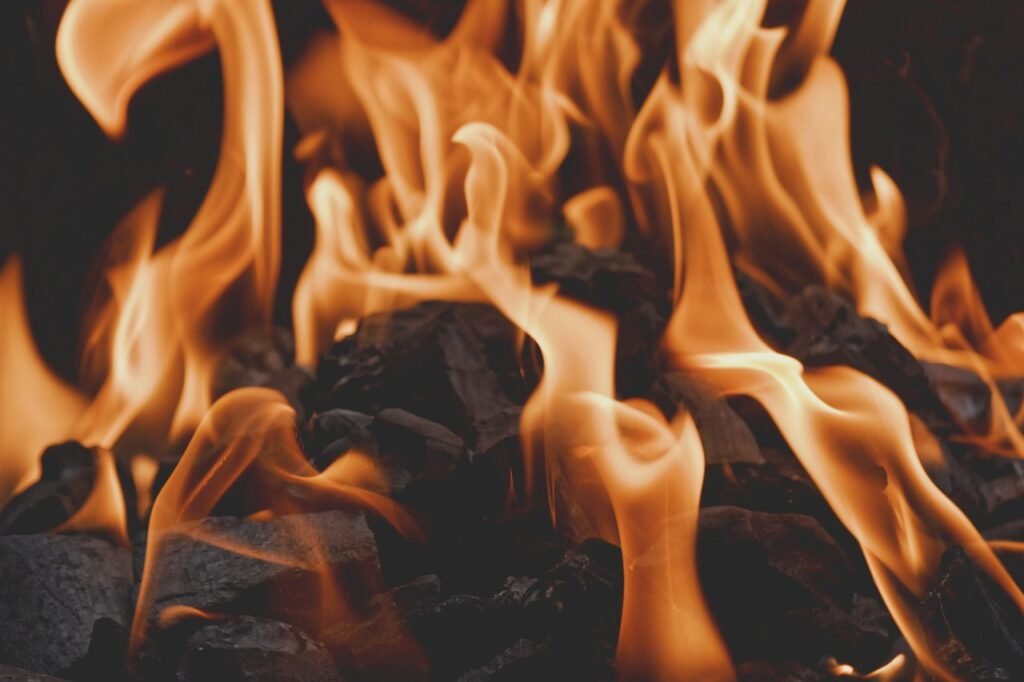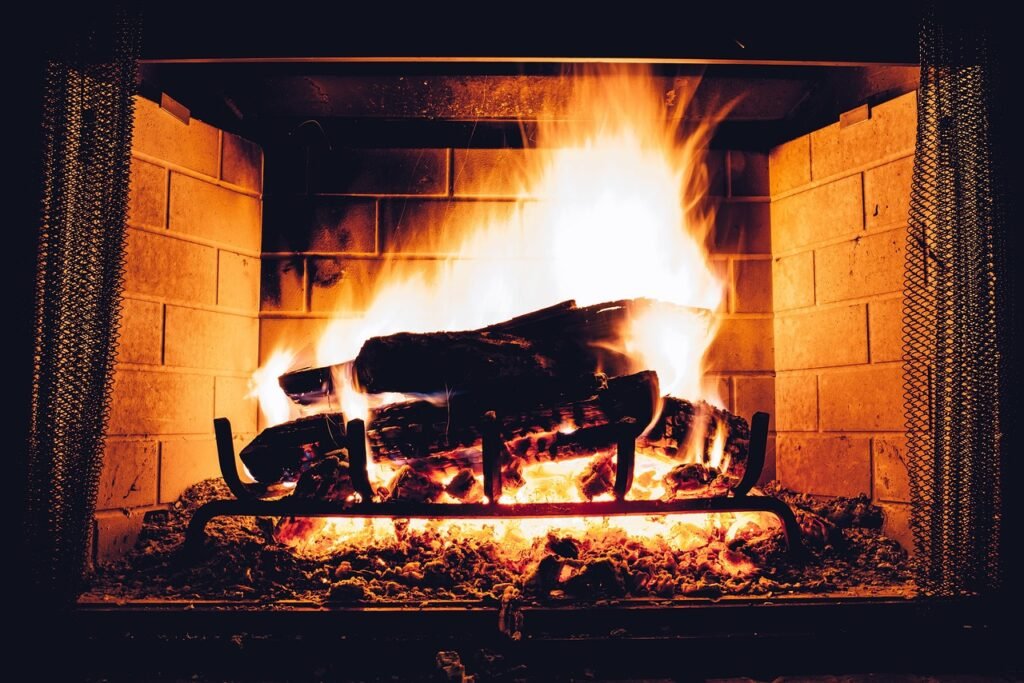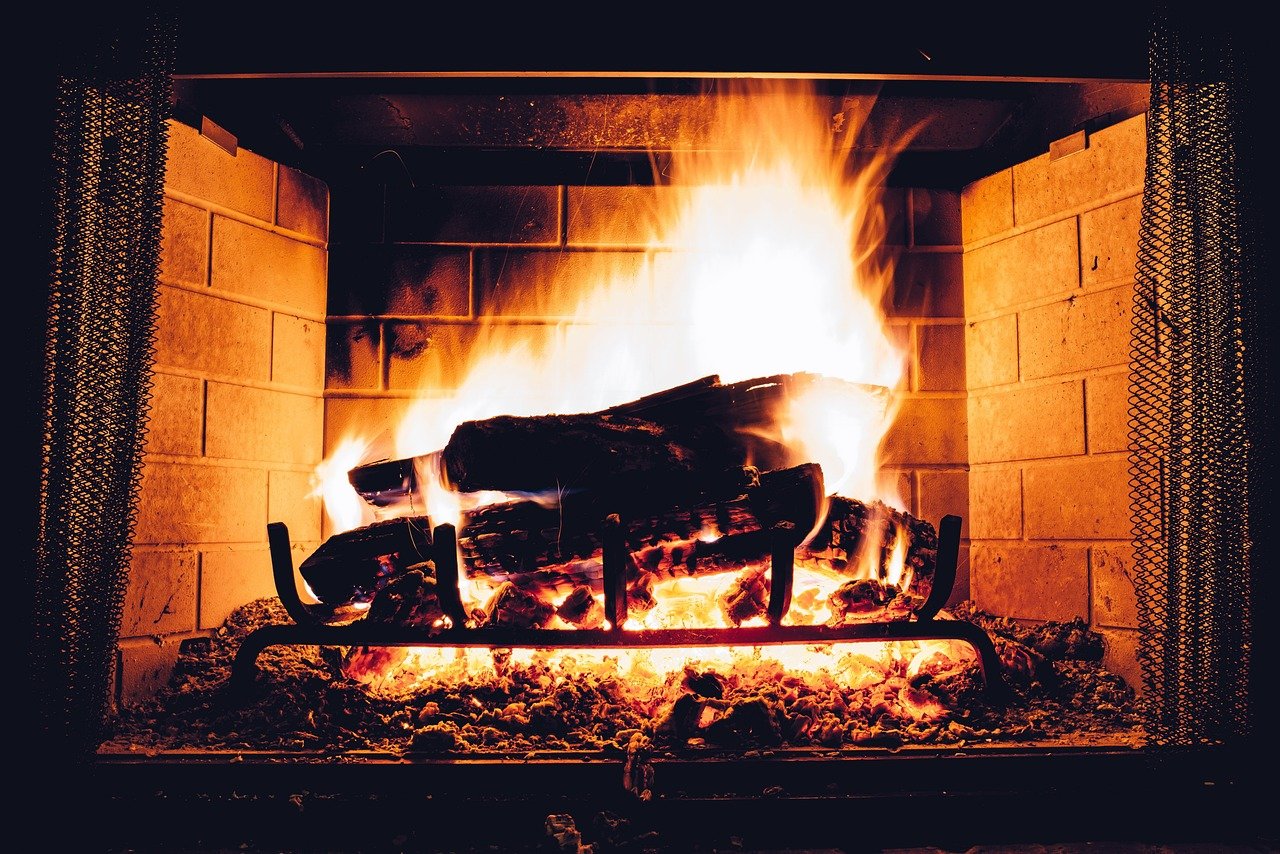Keeping your fireplace in top condition is essential for a cozy and safe winter season. In this comprehensive guide, we’ll walk you through a straightforward checklist of seasonal fireplace maintenance tasks. From cleaning the chimney and inspecting the flue to checking for any cracks or leaks, we’ve got you covered. With our easy-to-follow steps, you’ll be well-prepared to enjoy a warm and inviting fire all winter long. So, grab your gloves and let’s get started!
Chimney Inspection
Importance of annual chimney inspection
Annual chimney inspection is crucial for ensuring the safety and efficiency of your fireplace. Regular inspections help identify any potential issues or damages in your chimney that could lead to a fire hazard or impaired functionality. A professional chimney inspector will thoroughly examine the interior and exterior of your chimney, checking for any signs of wear and tear, cracks, or blockages. By identifying and addressing these issues early on, you can avoid more extensive and costly repairs in the future.
Finding a professional chimney inspector
When it comes to chimney inspection, it is important to find a professional and experienced chimney inspector. Start by asking for recommendations from friends, family, or neighbors who have recently had their chimneys inspected. You can also search online directories or websites dedicated to connecting homeowners with reputable chimney service providers. When selecting a chimney inspector, consider factors such as their certification, qualifications, and customer reviews. A trustworthy and knowledgeable chimney inspector will ensure a thorough and accurate assessment of your chimney’s condition.
Signs that your chimney needs inspection
While annual inspections are recommended, there are certain signs that indicate the need for an immediate chimney inspection. If you notice any of the following symptoms, it is essential to have your chimney inspected promptly:
- Strong odor coming from the chimney
- Excessive smoke while using the fireplace
- Difficulty in starting or maintaining a fire
- Unusual sounds or noises coming from the chimney
- Presence of water leaks or dampness around the fireplace or chimney
- Visible cracks or damages to the chimney structure
By addressing these signs promptly, you can prevent further damage and ensure the safety of your fireplace and home. Remember, regular chimney inspections are a proactive approach to fireplace maintenance and should not be overlooked.
Creosote Removal
Understanding creosote buildup
Creosote is a natural byproduct of burning wood in your fireplace. It is a black, sticky substance that forms along the walls of your chimney as a result of incomplete combustion. Creosote buildup becomes a concern as it can restrict airflow, reduce the efficiency of your fireplace, and even pose a fire hazard. The accumulation of creosote can vary depending on factors such as the type of wood burned and the frequency of fireplace use.
Risks associated with excessive creosote
Excessive creosote buildup can lead to several risks, both for your chimney and your home. The primary concern is the increased risk of a chimney fire. Creosote is highly flammable, and when it builds up in your chimney, it can ignite and cause an uncontrollable fire. Additionally, creosote acts as an insulator, reducing the airflow in your chimney. This can result in poor combustion, leading to more creosote buildup and the release of harmful gases into your home.
Methods for removing creosote
Removing creosote from your chimney is a crucial step in fireplace maintenance. There are several methods for creosote removal, including:
-
Chimney sweeping: A professional chimney sweep will use specialized brushes and equipment to remove creosote from the interior walls of your chimney. This method is recommended for chimneys with moderate creosote buildup.
-
Chemical creosote removers: There are products available that can help break down and remove creosote from your chimney. These products are applied and left to work for a certain period before being swept away.
-
Mechanical removal: For severe creosote buildup, mechanical removal may be necessary. This method involves using rotary cleaning systems or other mechanical devices to physically remove the creosote.
The method chosen will depend on the severity of the creosote buildup and the recommendations of a professional chimney inspector. Regular creosote removal is essential to maintain the safety and efficiency of your fireplace.
Cleaning the Fireplace

This image is property of pixabay.com.
Removing ashes and debris
Before cleaning your fireplace, it is important to remove any ashes and debris. Use a fireplace shovel or metal scoop to carefully scoop out the ashes into a metal container. Avoid using household vacuum cleaners as they are not designed to handle ashes and can cause damage or pose a fire hazard. Once the ashes are removed, dispose of them in a safe manner, ensuring they are completely extinguished.
Cleaning the fireplace grate and glass doors
The fireplace grate and glass doors can accumulate soot and debris over time. Use a wire brush or a fireplace cleaning solution to scrub away the buildup on the grate. For the glass doors, use a non-abrasive cleaner specifically designed for fireplace glass. Gently scrub the glass with a soft cloth or sponge, removing any smudges or residue. This will keep your fireplace looking clean and ensure a clear view of the fire.
Sweeping the hearth and surrounding area
After removing the ashes and cleaning the grate and glass doors, sweep the hearth and the surrounding area. Remove any loose debris, such as dust, dirt, or small wood chips, using a broom or vacuum cleaner. Pay attention to corners and hard-to-reach areas, ensuring a thorough cleaning. Regular sweeping of the hearth area will prevent the buildup of dirt and make the space more inviting for cozy fires.
Inspecting the Firebox
Examining the firebox for cracks and damage
The firebox, the interior chamber where the fire is contained, should be inspected for any cracks or damages. Use a flashlight and visually check the firebox walls, floor, and ceiling. Look for signs of cracking, crumbling mortar, or any other indications of wear and tear. Cracks in the firebox can allow heat and flames to reach combustible materials surrounding the fireplace, posing a fire hazard.
Replacing damaged firebricks
If you notice any damaged or deteriorated firebricks in the firebox, they should be replaced promptly. Firebricks are designed to withstand high temperatures and provide protection to the surrounding masonry. Cracked or broken firebricks compromise the structural integrity of the firebox and can lead to further damage. Consult with a professional to determine the appropriate firebricks for replacement and ensure they are installed correctly.
Removing obstructions and debris
During the inspection, check for any obstructions or debris in the firebox. Make sure there are no leftover ashes or foreign objects that could hinder the proper airflow or cause a blockage. Remove any debris using a fireplace shovel or vacuum cleaner specifically designed for fireplace use. Clearing the firebox of obstructions will allow for better combustion and reduce the risk of chimney fires.
Checking the Chimney Cap and Flue

This image is property of pixabay.com.
Inspecting the chimney cap for damage
The chimney cap is an essential component of your chimney system. It covers the top opening of the chimney and acts as a shield against water, debris, and animals entering the flue. Regularly inspect the chimney cap for any signs of damage, such as cracks, rust, or loose fittings. A damaged chimney cap can allow water to enter the chimney, leading to deterioration and costly repairs.
Cleaning the chimney cap and removing obstructions
To ensure proper functioning, the chimney cap should be cleaned regularly. Remove any debris, such as leaves, twigs, or bird nests, that may have accumulated on top of the chimney cap. Use a brush or a gentle spray of water to clean the cap thoroughly. Make sure to follow the manufacturer’s instructions, as some chimney caps may require specific cleaning methods.
Checking the flue for proper operation
The flue is the passageway within the chimney that allows for the safe expulsion of combustion gases. During the inspection, make sure the flue is fully open and functioning correctly. Test the operation of the flue, ensuring it opens and closes smoothly. A malfunctioning flue can affect the airflow, leading to poor combustion and the release of harmful gases into your home. If you encounter any issues with the flue, contact a professional chimney inspector or sweep for further assistance.
Cleaning the Chimney
Understanding the importance of chimney cleaning
Regular chimney cleaning is vital to maintain the safety and efficiency of your fireplace. Over time, creosote, debris, and even animals can accumulate within the chimney, restricting airflow and increasing the risk of a chimney fire. Professional chimney cleaning removes these obstructions, reduces the buildup of creosote, and ensures proper ventilation.
Different methods for chimney cleaning
There are two primary methods for chimney cleaning:
-
Traditional chimney sweeping: A professional chimney sweep will use brushes and rods to clean the interior of the chimney, dislodging and removing the built-up creosote and debris. This method is recommended for chimneys with moderate to heavy creosote buildup.
-
Mechanical cleaning: For severe creosote buildup or more complex chimney systems, mechanical cleaning methods can be employed. These methods often involve the use of specialized equipment, such as rotary cleaning systems, to thoroughly clean the chimney.
The method chosen will depend on the condition of your chimney, the severity of creosote buildup, and the recommendations of a professional chimney inspector. Regular chimney cleaning is essential for maintaining the safety and performance of your fireplace.
When to hire a professional chimney sweep
While some aspects of fireplace maintenance can be done by homeowners, chimney cleaning is best left to the professionals. A professional chimney sweep has the expertise, experience, and proper equipment to safely and effectively clean your chimney. They can also identify any potential issues during the cleaning process, ensuring your fireplace and chimney are in optimal condition. It is recommended to schedule a professional chimney cleaning at least once a year, or more frequently if you use your fireplace regularly.
Testing Smoke and Carbon Monoxide Detectors

This image is property of pixabay.com.
Importance of functional smoke and carbon monoxide detectors
Smoke and carbon monoxide detectors are essential components of home fireplace safety. They provide early warnings in the event of a fire or the presence of dangerous levels of carbon monoxide. Regularly testing and maintaining these detectors is crucial to ensure they are functioning properly and protecting your home and family.
Testing and replacing batteries
Test your smoke and carbon monoxide detectors regularly to ensure they are operational. Follow the manufacturer’s instructions for testing, usually by pressing a designated test button. If the alarm sounds loudly, it indicates that the smoke or carbon monoxide detection system is functioning correctly. If the alarm does not sound, replace the batteries immediately. Batteries should be replaced at least once a year, or more often if the low-battery indicator beeps.
Proper placement of detectors
Proper placement of smoke and carbon monoxide detectors is essential for optimal performance. Install detectors on every level of your home, including the basement and near sleeping areas. Place them high on walls or ceilings, as smoke and carbon monoxide tend to rise. Avoid placing detectors near windows, doors, or vents, as these areas may affect their ability to detect smoke or carbon monoxide. It is also important to regularly clean the detectors to remove any dust or debris that can interfere with their performance.
Maintaining Proper Ventilation
Understanding the role of ventilation in a fireplace
Proper ventilation is crucial for the safe and efficient operation of your fireplace. It ensures the adequate supply of fresh air for combustion, while also expelling harmful gases and smoke. Ventilation is achieved through the chimney, flue, and other venting systems connected to the fireplace.
Checking and cleaning vents
Regularly inspect and clean the vents connected to your fireplace. Check for any obstructions, such as leaves or bird nests, that may restrict the airflow. Using a brush or vacuum cleaner, remove any debris or buildup from the vents. Properly functioning vents will ensure the efficient flow of air and prevent the buildup of harmful gases within your home.
Ensuring proper airflow
To maintain proper airflow, it is important to ensure that the area around the fireplace is clear of any furniture, rugs, or other objects that may obstruct the airflow. Make sure that the damper is fully open during use to allow for sufficient ventilation. Proper airflow will result in better combustion and reduce the risk of smoke or gases entering your home.
Inspecting and Cleaning Fireplace Accessories
Inspecting the damper and adjusting its operation
The damper is a movable plate located in the throat of the chimney that helps control the airflow and seal the fireplace when not in use. Regularly inspect the damper for any signs of damage, such as rust or warping. Test its operation by opening and closing the damper, ensuring it moves smoothly. If you encounter any issues with the damper, it may need adjustment or repair. Consult with a professional if you are unsure.
Cleaning and maintaining fireplace tools
Fireplace tools, such as pokers and shovels, can become dirty and coated with soot over time. Clean these tools regularly using a wire brush or a mild soap and water solution. Dry them thoroughly to prevent rusting. Proper maintenance of fireplace tools ensures their longevity and usability when tending to the fire.
Checking the condition of the grate and log holder
Inspect the fireplace grate and log holder for any signs of damage or wear. Look for bent or broken bars on the grate and ensure the log holder is sturdy. If any issues are found, consider replacing the damaged parts to maintain the safety and functionality of your fireplace accessories.
Preventing Pest Infestation
Understanding the risk of pest infestation in fireplaces
Fireplaces can attract pests such as birds, squirrels, or raccoons, especially during colder months when they seek shelter and warmth. These animals can potentially cause damage to the chimney, build nests, or block the airflow. Preventing pest infestation is crucial for maintaining the safety and performance of your fireplace.
Sealing gaps and cracks to deter pests
Inspect the exterior of your chimney and fireplace for any gaps or openings that may allow pests to enter. Use a sealant or other appropriate materials to fill in these gaps and cracks. Ensure that vents and chimney caps are intact and properly installed to prevent animals from accessing your chimney.
Removing nests and debris
Regularly check your chimney and fireplace for the presence of nests, leaves, twigs, or other debris. Safely remove any obstructions using protective gear, such as gloves and a mask, to prevent exposure to harmful substances or pests. Removing nests and debris will prevent potential blockages and discourage pests from making your chimney their home.
By following these maintenance guidelines, you can ensure that your fireplace remains safe, efficient, and enjoyable throughout the year. Remember, it is always best to consult with a professional chimney inspector or sweep for any specific concerns or issues regarding your fireplace. Stay warm and cozy, and enjoy the comforts of a well-maintained fireplace!




